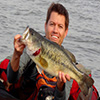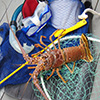When fishing in Colorado, it is important to educate yourself on the rules and regulations, as well as safety standards of the state. One of the best ways to gain further knowledge about this popular sporting activity is by enrolling in a fishing class. Continue reading to learn everything you need to know about fishing in CO.
Fishing Classes
Enrolling in fishing classes is an ideal choice to further develop this sporting pastime and hobby. For example, learning how to tackle rigging and cast a line or fly tying are essential skills difficult to pick up alone. Fishing guides provide years of experience, and are also familiar with state park fishing or privately-owned waters. If you would like to make fishing a bigger part of your life, consider enrolling in fishing classes to learn about types of fishing in Colorado, as well as specific techniques from professional instructors.
Safety
Although fishing is not considered a dangerous sport, there are certain rules to abide by to eliminate unnecessary risks and injuries. Review the following safety rules in Colorado for a safe fishing trip.
- Check the forecast before heading out on the water. Fishing in light rain is acceptable, so long as you wear the right type of water-repellant gear to prevent sickness. Yet, by no means should you head out on the water during thunderstorms or days of high winds.
- Wear a US Coast Guard-certified lifejacket when out on a boat.
- Stay hydrated. Fishing is generally an all-day activity under the sun, so your energy is quickly depleted. By drinking fresh water throughout the day, you guarantee staving off headaches or even heat stroke.
- Even the best of anglers are encouraged to wear protective eyewear, be it glasses or fishing goggles. Eye injuries are more common early in the morning or late at night; therefore, take precaution to protect your eyes from flying hooks.
- Fish from a stable shoreline and make sure rocks underfoot are secure, not wobbly.
Ice Fishing Safety
In Colorado, ice fishing is one of the most popular forms of fishing. For roughly five months out of the year, fishermen can find icy lakes on which to fish. Yet, there is an element of danger, as walking across ice is necessary. Review the following safety guidelines to determine ice conditions and prevent falling through the ice.
- Take notice of the lake at which you are fishing. If the lake is shallow and free of trees and other brush, then the water will freeze faster than a deep lake.
- Look for blue ice, because this means it is newly formed, and new ice is stronger than old ice.
- Do not stand on ice that is formed around trees, brush, embankments or structures.
- Make test-drill holes at least 30 feet apart to determine ice thickness.
Laws & Regulations
Fishing in Colorado requires all participating residents and visitors to abide by certain laws and regulations. State parks and privately owned water properties are regulated, and if caught without a fishing license or breaking an environmental law, a penalty fine will be issued. Review the most important Colorado fishing laws and regulations below.
- Fish that are caught and released must be alive and returned to the same body of water where they were fished from.
- Crayfish that have eggs must be returned to the water.
- Shrimp must be at least three inches long.
- Mollusks cannot be used for bait.
- Ice fishing holes can be no larger than 10 inches in diameter.
- At no point in time may you fish in waters with signage that indicate they are protected waters.
- Collection, use or possession of live fish as bait is prohibited in waters east of the Continental Divide and below 7,000 feet of elevation.
Threatened, Endangered and Nongame Species in Colorado
The Colorado Parks and Wildlife office has determined which fish species are threatened, endangered and nongame. Prohibited species include but are not limited to the following: Arkansas darter, Bonytail chub, Boreal toad, Brassy minnow, Colorado pikeminnow, Common shiner and others.




